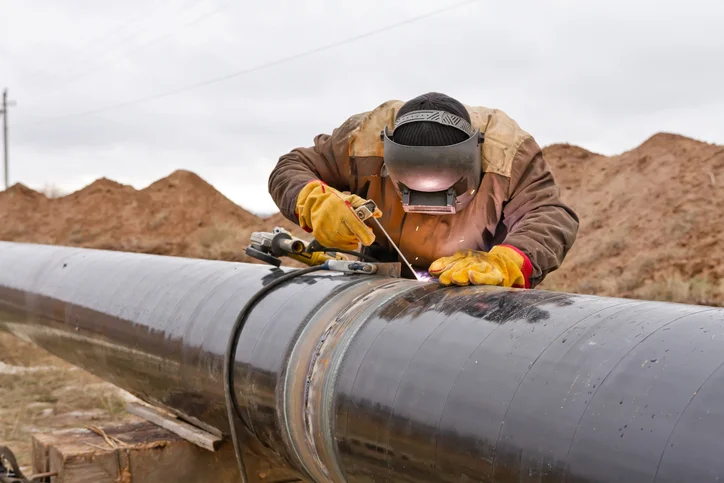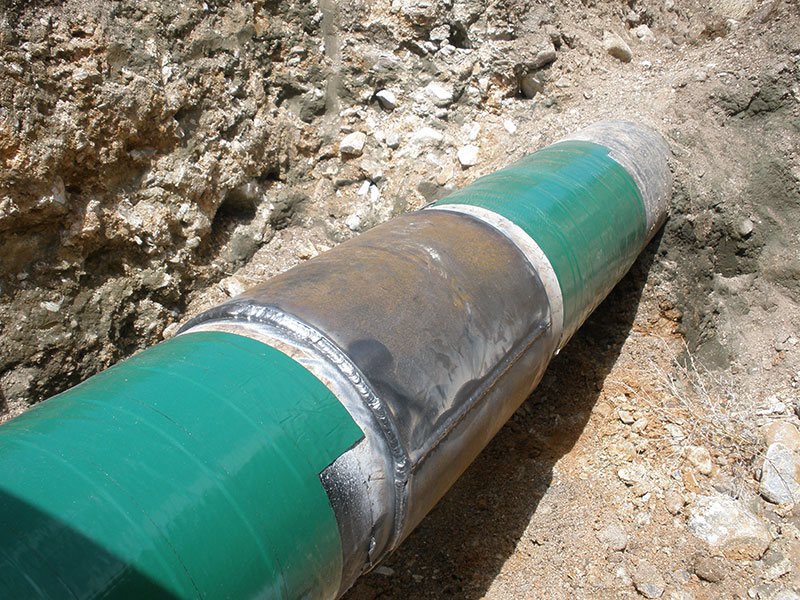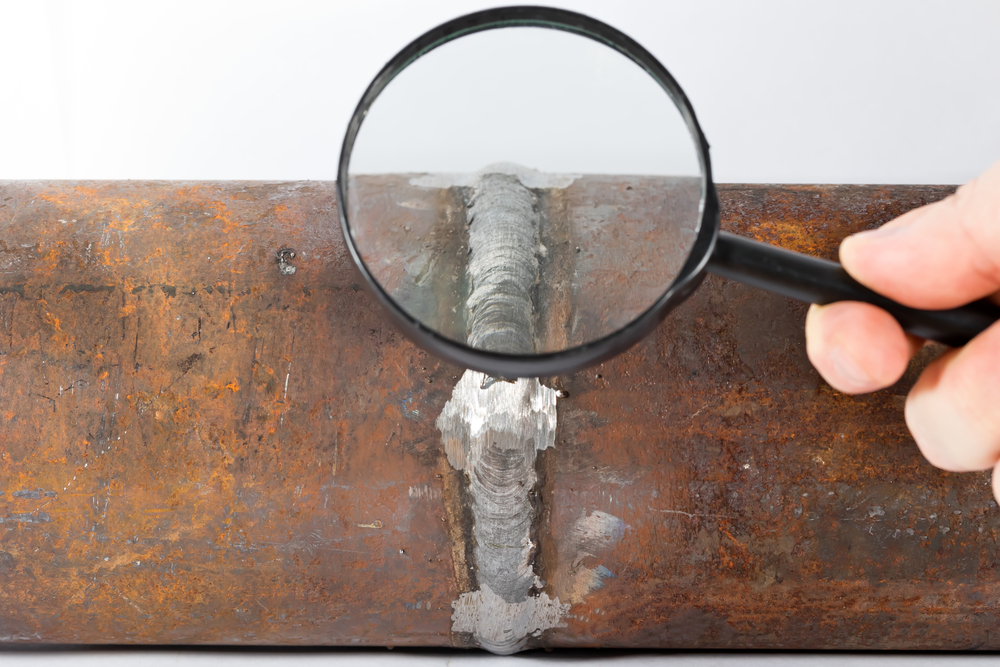Advanced Methods in Pipeline Welding Evaluation: Innovations and Technologies for Improved Precision and Reliability in Weld Analysis
The landscape of pipe welding evaluation is undergoing a considerable transformation, driven by innovative strategies that guarantee to improve both accuracy and dependability in weld assessments. Innovations such as automatic inspection systems and advanced imaging technologies are redefining conventional methods, while non-destructive screening techniques ensure material stability is preserved.

Relevance of Weld Examination
Making sure the integrity of pipe welds is vital to the total safety and integrity of commercial systems. Welds work as the architectural foundation of pipelines, which transfer a range of liquids under varying pressures. Problems in welding can cause catastrophic failings, resulting in not only substantial economic losses but also possible ecological disasters and threats to public safety. As a result, rigorous examination of welds is essential to the lifecycle of pipe facilities.
The importance of weld inspection extends beyond mere conformity with governing requirements. It acts as a proactive step to determine and correct blemishes, such as incomplete fusion, porosity, or cracks, before they rise into severe problems. Effective examination strategies likewise add to the durability of pipes, reducing upkeep prices and improving functional performance.
Additionally, detailed weld examinations foster trust among stakeholders, consisting of regulative bodies, capitalists, and the areas offered by these pipes. By ensuring that all welds fulfill the called for standards, organizations can alleviate threats and maintain their track records. In summary, weld inspection is essential not just for functional integrity yet also for the broader effects it holds for safety and security and ecological stewardship.
Automated Inspection Systems
The integration of automatic assessment systems in pipe welding has transformed the method to making certain weld high quality and stability. These systems use sophisticated robotics and artificial intelligence to conduct examinations that are not just quicker yet also a lot more consistent than conventional approaches. Automated systems can cover comprehensive lengths of pipes effectively, recording information that human assessors may overlook as a result of tiredness or ecological conditions.
One of the key advantages of automated examination systems is their capacity to run in unsafe environments, reducing the danger to human assessors. They use different non-destructive screening (NDT) techniques, such as ultrasonic screening and magnetic fragment evaluation, to assess weld stability without compromising the structure. The information collected is refined in real-time, enabling prompt responses and prompt restorative actions when problems are determined.
In addition, automated systems help with the standardization of assessment procedures, making certain that each weld is evaluated versus regular standards. This not only enhances the integrity of outcomes yet likewise improves conformity with governing requirements. As markets continue to focus on security and operational efficiency, the role of computerized evaluation systems in pipeline welding will definitely expand, leading the way for extra sophisticated quality control techniques.
Advanced Imaging Technologies
Often used in modern-day pipe welding inspections, advanced imaging technologies have significantly improved the capacity to find and analyze weld flaws. Techniques such as digital radiography, computed tomography, and thermographic imaging provide examiners with high-resolution images that expose sub-surface flaws and structural variances that may be invisible to the nude eye.
This leads to quicker assessments and improved accuracy in determining important flaws. Computed tomography, on the other hand, provides three-dimensional imaging, allowing inspectors to envision complicated geometries and assess the stability of welds from several angles.
Thermographic imaging utilizes infrared technology to find variations in temperature, recognizing areas of possible weakness or stress and anxiety within the weld. These innovative imaging innovations not just boost problem discovery prices however likewise minimize the moment and sources required for pipe inspections. Therefore, they play a critical function in keeping pipeline safety and reliability, making sure conformity with market requirements while minimizing operational dangers.
Non-Destructive Evaluating Techniques
Making use of numerous strategies, non-destructive testing (NDT) techniques are vital in pipe welding inspections, allowing for the examination of weld integrity without jeopardizing the material's architectural stability. NDT incorporates an array of methods, including ultrasonic screening (UT), radiographic screening (RT), magnetic fragment testing (MT), and color penetrant screening (PT) Each approach has distinctive advantages and applications relying on the specific requirements of the evaluation.
Ultrasonic testing utilizes high-frequency acoustic waves to identify inner problems, offering accurate measurements of weld density and honesty. Pipeline Welding Inspection. Radiographic screening utilizes X-rays or gamma rays to generate images of the weld, exposing internal flaws that might not be visible on the surface. Magnetic bit screening works for identifying surface and near-surface suspensions in ferromagnetic products, while color penetrant testing highlights surface area cracks by utilizing a colored dye
Integrating these NDT methods into pipe welding assessments boosts the precision and integrity of weld evaluations, ensuring that possible failures are recognized early. As sectors demand greater standards for security and performance, the duty of NDT in preserving the integrity of bonded navigate to these guys frameworks remains to be crucial in pipe building and construction and maintenance.

Future Trends in Weld Assessment
As we want to the future of weld analysis, developments in innovation are poised to revolutionize the techniques utilized for evaluating pipe honesty. The assimilation of expert system (AI) and machine discovering in inspection procedures is expected to boost the precision of problem discovery and predictive upkeep. These innovations permit for real-time data evaluation, allowing inspectors to determine potential problems prior to they escalate into considerable troubles.
In addition, the usage of drones geared up with advanced imaging systems is obtaining grip. These aerial inspections can cover huge areas rapidly, catching high-resolution pictures and information that can be evaluated for issues in hard-to-reach areas. This not just improves security however additionally increases effectiveness in the examination process.
Moreover, the growth of clever sensors installed in pipe systems provides the potential for constant tracking. These sensors can find adjustments in pressure, temperature, and resonances, offering beneficial insights into the wellness of the welds gradually.

Conclusion
To conclude, the integration of advanced strategies in pipeline welding assessment dramatically boosts the accuracy and reliability of weld analyses. Innovations such as automated examination systems, progressed imaging innovations, and non-destructive testing approaches play an important duty in improving issue detection go to this site rates and cultivating aggressive upkeep techniques. As these technologies remain to progress, they will certainly additionally make sure the security and performance of pipeline systems, eventually adding to the integrity of essential facilities.
